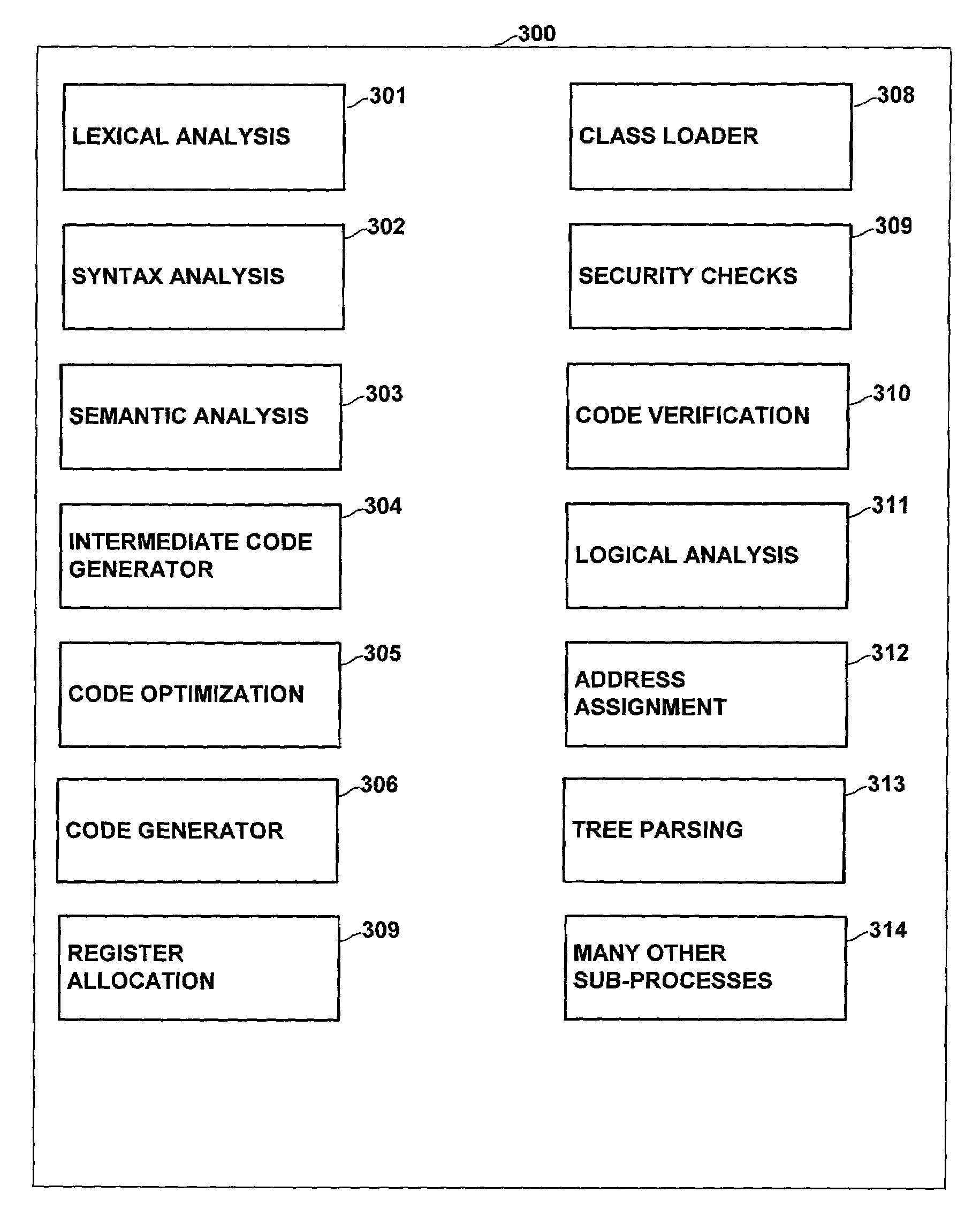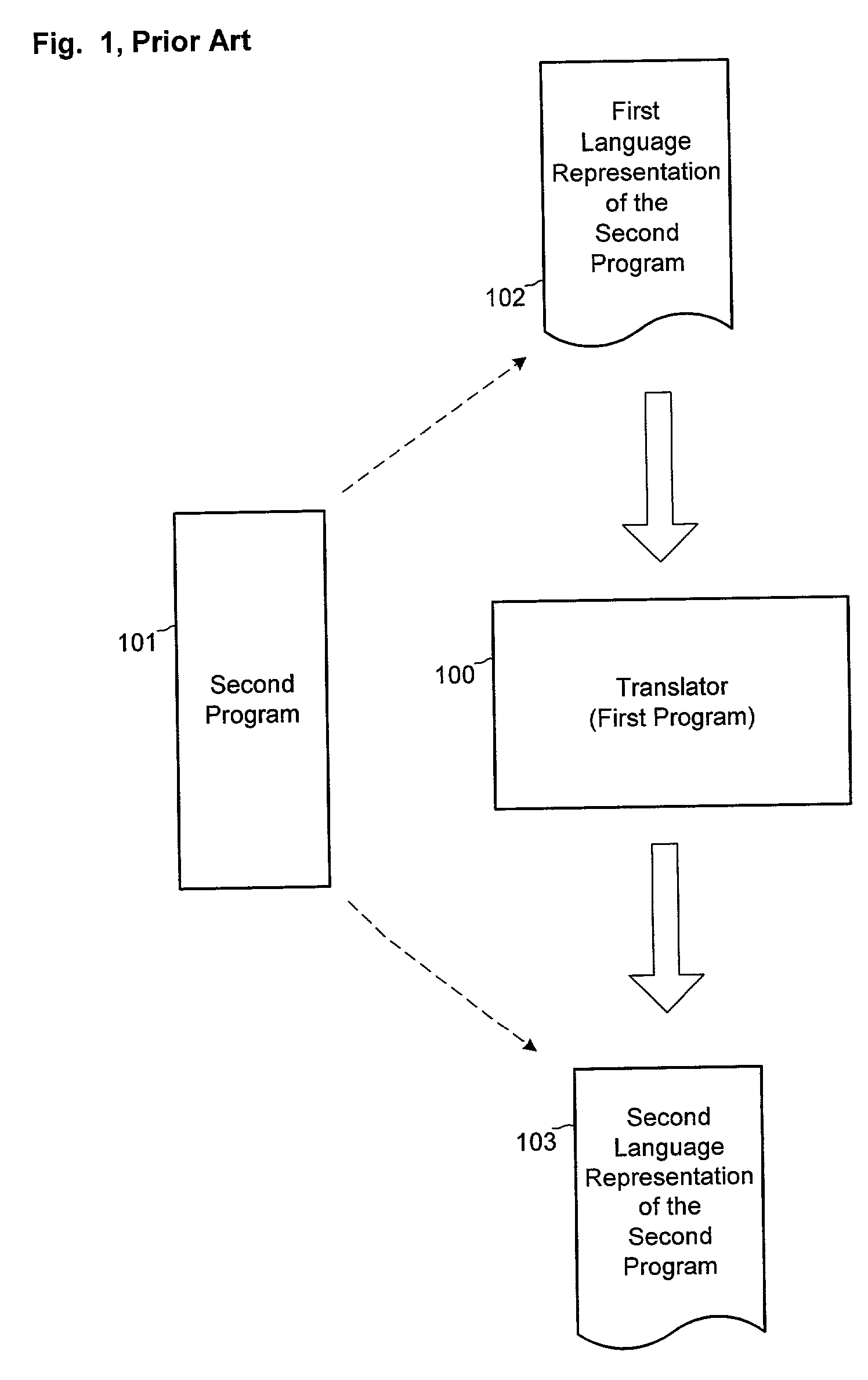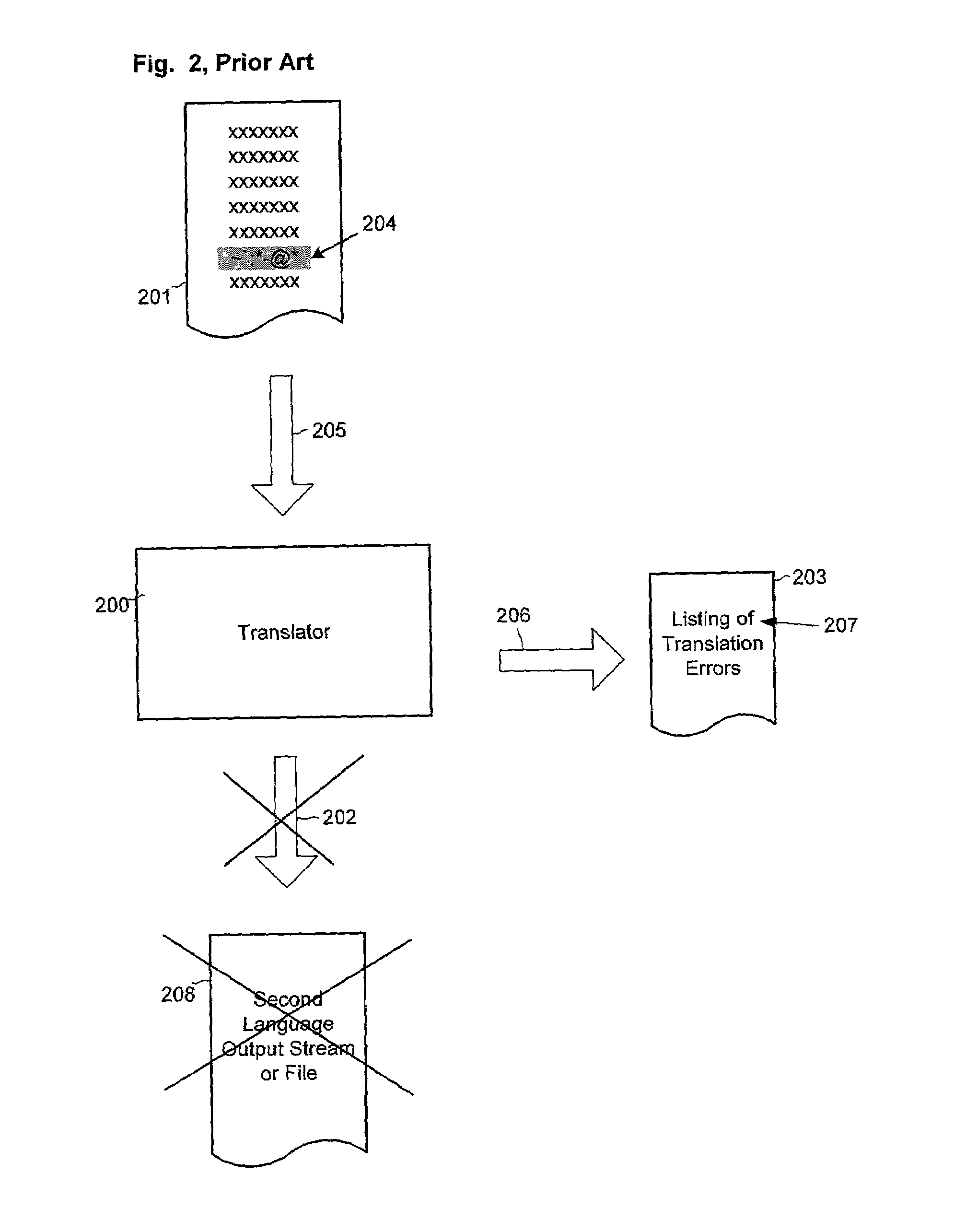Placing exception throwing instructions in compiled code
a technology of exception throwing instructions and compilers, applied in the field of compilers, can solve problems such as compilers that often delay translation, object code is not available to be executed, compilers know compiler errors, etc., and achieve the effect of reducing the workload of subsequent translators
- Summary
- Abstract
- Description
- Claims
- Application Information
AI Technical Summary
Benefits of technology
Problems solved by technology
Method used
Image
Examples
Embodiment Construction
Translators
[0046]Generally, as shown in FIG. 1, a translator is a first program 100 that takes a second program 101 written in a first language 102 as input and creates a second language representation of the second program 103 as output. If the first language is a high level language such as C, C++, Smalltalk, or Ada (source code), and the second language is a machine readable code or assembly language code, then the translator is called a compiler.
[0047]Other translators convert from one language to another language called an intermediate language. Often intermediate language code can be directly executed by a computer by using a program called an interpreter. Other times the intermediate language is further reduced to object code before being executed. Some high level compilers use assembly language code for an intermediate language. Assembly language code is generally a low level language code where each instruction corresponds to a single machine instruction. Assemblers are pro...
PUM
 Login to View More
Login to View More Abstract
Description
Claims
Application Information
 Login to View More
Login to View More - R&D
- Intellectual Property
- Life Sciences
- Materials
- Tech Scout
- Unparalleled Data Quality
- Higher Quality Content
- 60% Fewer Hallucinations
Browse by: Latest US Patents, China's latest patents, Technical Efficacy Thesaurus, Application Domain, Technology Topic, Popular Technical Reports.
© 2025 PatSnap. All rights reserved.Legal|Privacy policy|Modern Slavery Act Transparency Statement|Sitemap|About US| Contact US: help@patsnap.com



